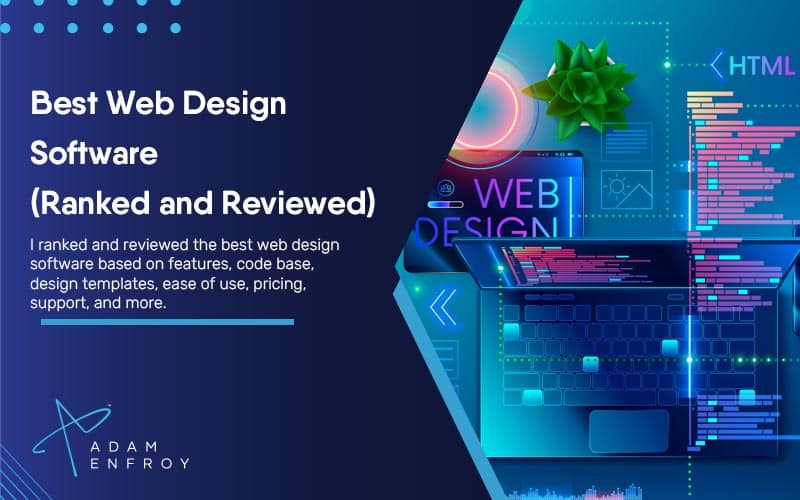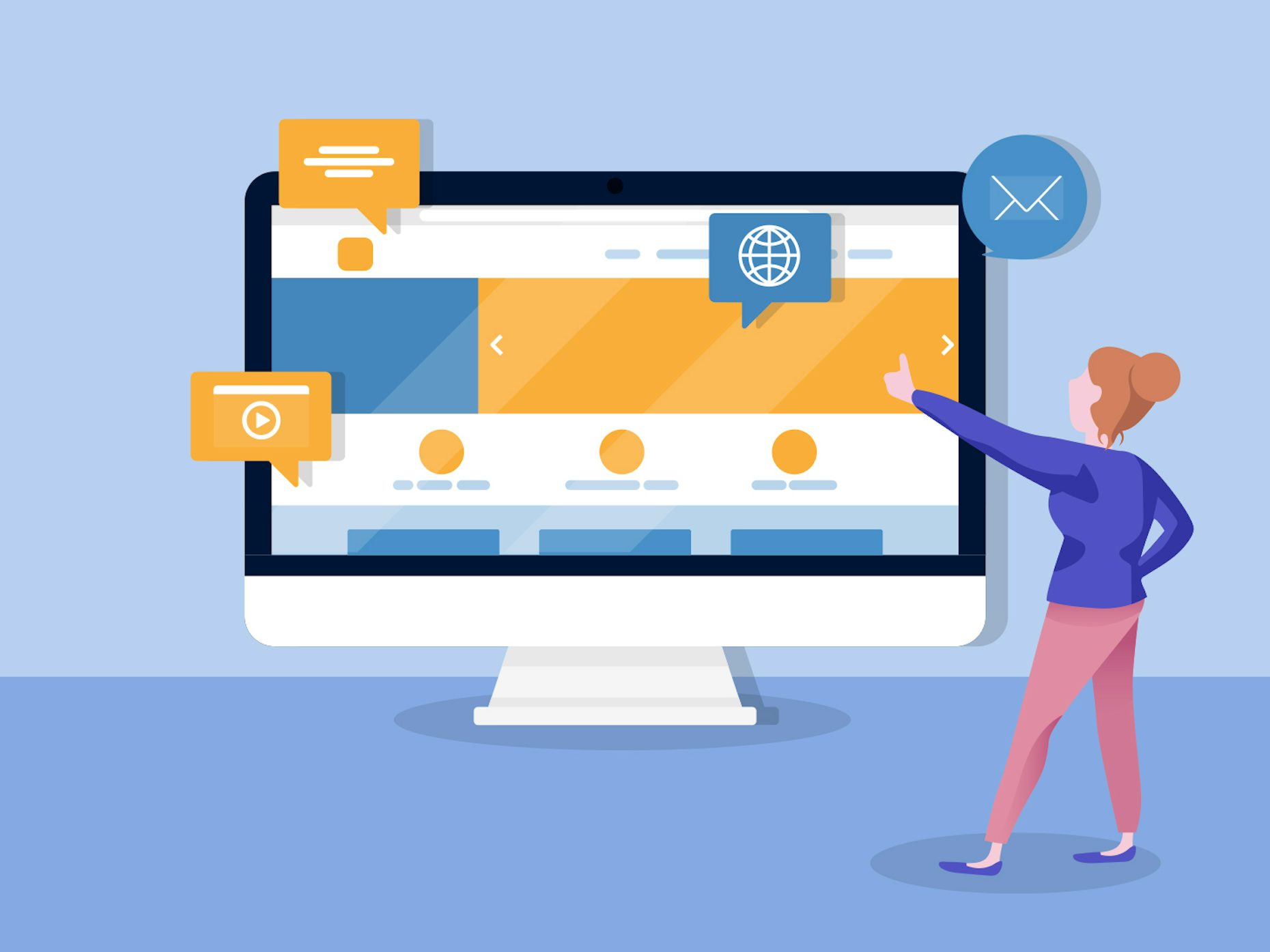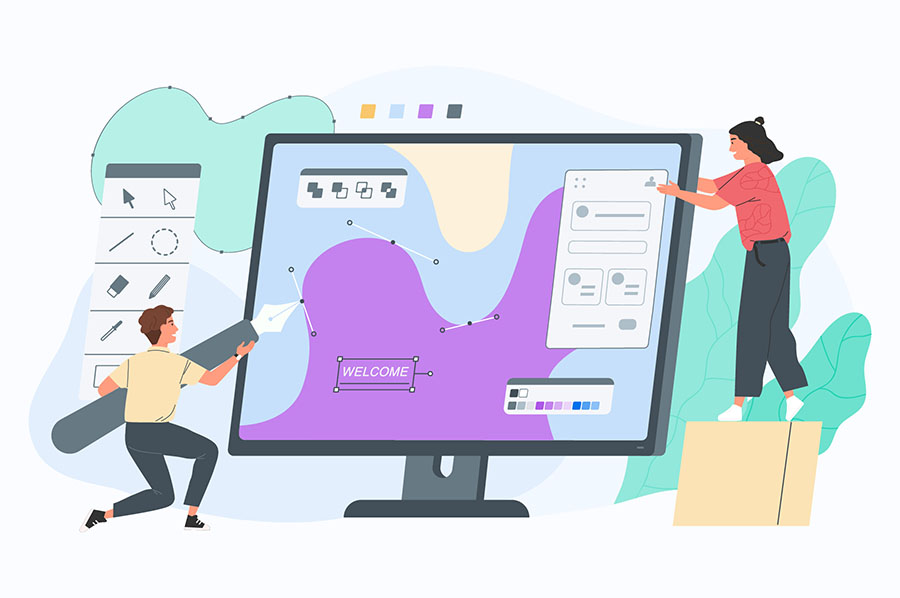All Categories
Featured
Table of Contents
- – Lifted Logic: Web Design In Kansas City - Seo ...
- – Why Good Web Design Is Important, And Why You...
- – Figma: The Collaborative Interface Design Too...
- – What Can I Do With A Web Design And Developme...
- – Webdesign Designs, Themes, Templates And ... ...
- – Web Designer News - The Best Curated News For...
- – Web Design Services + Website Development Ag...
- – Why Is Web Design Important? - 6 Reasons To ...
- – Web Design & Seo By Acs - Syracuse Web Desig...
- – Responsive Web Design - A List Apart Tips an...
- – What Is Web Design, How To Do It Right And B...
Lifted Logic: Web Design In Kansas City - Seo - Website ... Tips and Tricks:
Quick summary Use and the energy, not the visual style, figure out the success or failure of a website. Because the visitor of the page is the only individual who clicks the mouse and for that reason decides everything, user-centric style has actually developed as a standard method for successful and profit-oriented website design - web design frederick md.
and the energy, not the visual design, identify the success or failure of a website. Since the visitor of the page is the only person who clicks the mouse and therefore decides whatever, user-centric style has become a basic technique for effective and profit-oriented web design. If users can't use a feature, it may as well not exist.
g. where the search box must be placed) as it has actually already been performed in a variety of short articles; rather we concentrate on the approaches which, utilized correctly, can lead to more sophisticated style choices and simplify the procedure of perceiving presented info. Please observe that you might be interested in the usability-related articles we have actually published prior to: Concepts Of Excellent Website Design And Effective Web Design Standards, In order to use the concepts properly we initially need to comprehend how users communicate with websites, how they think and what are the standard patterns of users' habits.
Why Good Web Design Is Important, And Why You Need It Tips and Tricks:
Visitors glance at each brand-new page, scan a few of the text, and click the very first link that captures their interest or slightly looks like the important things they're trying to find. In reality, there are large parts of the page they don't even take a look at. Many users browse for something fascinating (or helpful) and clickable; as soon as some promising candidates are found, users click.
If a page offers users with high-quality material, they want to jeopardize the content with advertisements and the style of the site. This is the factor why not-that-well-designed websites with top quality content acquire a great deal of traffic over years. Material is more important than the design which supports it.

Users do not read, they scan. Notification how "hot" areas abrupt in the middle of sentences. This is typical for the scanning procedure. Really simple concept: If a site isn't able to satisfy users' expectations, then designer failed to get his job done effectively and the company loses cash. The higher is the cognitive load and the less intuitive is the navigation, the more ready are users to leave the site and search for alternatives.
Figma: The Collaborative Interface Design Tool. Tips and Tricks:
Neither do they scan website in a linear fashion, going sequentially from one website area to another one. Rather users satisfice; they choose the very first affordable alternative. As quickly as they discover a link that looks like it might lead to the goal, there is a great opportunity that it will be right away clicked.
It does not matter to us if we understand how things work, as long as we can utilize them. If your audience is going to act like you're creating billboard, then style fantastic signboards." Users want to have the ability to control their browser and rely on the constant information presentation throughout the site.
If the navigation and site architecture aren't intuitive, the number of enigma grows and makes it harder for users to understand how the system works and how to obtain from point A to point B. A clear structure, moderate visual clues and easily recognizable links can help users to discover their course to their aim.
What Can I Do With A Web Design And Development Degree? Tips and Tricks:

Considering that users tend to check out websites according to the "F"-pattern, these three statements would be the very first elements users will see on the page once it is loaded. The design itself is easy and instinctive, to understand what the page is about the user needs to browse for the answer.
Once you've achieved this, you can interact why the system works and how users can gain from it. People will not use your website if they can't discover their method around it. 2. Don't Waste Users' Patience, In every task when you are going to provide your visitors some service or tool, attempt to keep your user requirements minimal.
First-time visitors want to, not filling long web forms for an account they might never ever utilize in the future. Let users check out the website and discover your services without requiring them into sharing private data. It's not reasonable to force users to go into an e-mail address to test the feature.
Webdesign Designs, Themes, Templates And ... - Dribbble Tips and Tricks:
Stikkit is a perfect example for an user-friendly service which needs nearly absolutely nothing from the visitor which is unobtrusive and soothing. And that's what you desire your users to feel on your website. Obviously, Termite requires more. Nevertheless the registration can be done in less than 30 seconds as the type has horizontal orientation, the user does not even require to scroll the page.
A user registration alone is sufficient of an impediment to user navigation to minimize inbound traffic. 3. Manage To Focus Users' Attention, As sites provide both fixed and vibrant material, some elements of the user interface bring in attention more than others do. Obviously, images are more eye-catching than the text simply as the sentences marked as vibrant are more attractive than plain text.
Focusing users' attention to particular areas of the website with a moderate use of visual aspects can help your visitors to receive from point A to point B without thinking about how it in fact is expected to be done. The less enigma visitors have, the they have and the more trust they can establish towards the business the site represents.
Web Designer News - The Best Curated News For Designers Tips and Tricks:
4. Strive For Function Direct exposure, Modern website design are typically criticized due to their method of guiding users with aesthetically appealing 1-2-3-done-steps, large buttons with visual effects and so on. But from the design perspective these elements in fact aren't a bad thing. On the contrary, such as they lead the visitors through the site material in a really basic and user-friendly way.
The site has 9 main navigation choices which are visible at the first look. What matters is that the content is well-understood and visitors feel comfortable with the method they interact with the system.
com gets straight to the point. No adorable words, no exaggerated declarations. Rather a cost: just what visitors are searching for. An optimum option for effective writing is touse brief and concise expressions (come to the point as rapidly as possible), use scannable design (categorize the content, use several heading levels, use visual components and bulleted lists which break the circulation of uniform text blocks), use plain and objective language (a promo does not need to sound like ad; provide your users some affordable and unbiased reason they ought to utilize your service or remain on your site)6.
Web Design Services + Website Development Agency Tips and Tricks:
Users are rarely on a site to take pleasure in the style; furthermore, in many cases they are searching for the information in spite of the style - web design frederick md. Strive for simplicity instead of complexity. From the visitors' point of view, the finest site style is a pure text, without any advertisements or more content obstructs matching precisely the question visitors used or the content they've been searching for.
Finch clearly provides the details about the website and offers visitors an option of alternatives without overcrowding them with unnecessary content. Not just does it help to for the visitors, however it makes it possible to perceive the information presented on the screen.
Complex structures are harder to read, scan, analyze and deal with. If you have the choice in between separating two design sectors by a visible line or by some whitespace, it's normally much better to utilize the whitespace option. (Simon's Law): the better you manage to offer users with a sense of visual hierarchy, the much easier your material will be to perceive.
Why Is Web Design Important? - 6 Reasons To Invest In Site ... Tips and Tricks:
The very same conventions and rules should be applied to all elements.: do the most with the least amount of hints and visual elements. Clearness: all elements should be designed so their meaning is not ambiguous.
Conventions Are Our Good friends, Conventional style of website elements does not result in a boring website. As they decrease the finding out curve, the requirement to figure out how things work. It would be an usability problem if all websites had different visual discussion of RSS-feeds. That's not that different from our regular life where we tend to get utilized to fundamental principles of how we arrange data (folders) or do shopping (positioning of products).
understand what they're anticipating from a website navigation, text structure, search placement etc. A typical example from usability sessions is to equate the page in Japanese (presuming your web users do not know Japanese, e. g. with Babelfish) and provide your functionality testers with a job to find something in the page of different language.
Web Design & Seo By Acs - Syracuse Web Design - Google ... Tips and Tricks:
Test Early, Test Often, This so-called TETO-principle ought to be applied to every web design project as use tests frequently provide into considerable problems and issues related to a provided layout. Test not too late, not too little and not for the wrong reasons.
Some essential indicate remember: according to Steve Krug, and screening one user early in the job is much better than screening 50 near the end. Accoring to Boehm's very first law, errors are most frequent during requirements and style activities and are the more pricey the later they are eliminated.
That indicates that you create something, test it, repair it and then test it again. There might be issues which have not been found during the first round as users were practically blocked by other problems.
Responsive Web Design - A List Apart Tips and Tricks:

This holds for designers also. After you've worked on a site for couple of weeks, you can't observe it from a fresh point of view any longer. You know how it is developed and therefore you understand precisely how it works you have the knowledge independent testers and visitors of your site would not have.
It can be linked to other areas such as graphic style, user experience, and multimedia arts, but is more appropriately seen from a technological viewpoint. It has become a large part of people's everyday lives. It is tough to picture the Web without animated graphics, various styles of typography, background, videos and music.

During 1991 to 1993 the World Wide Web was born. Text-only pages could be seen utilizing a basic line-mode web browser. There had actually been no integrated technique to graphic design elements such as images or noises.
What Is Web Design, How To Do It Right And Best Skills - Rock ... Tips and Tricks:
The W3C was produced in October 1994 to "lead the Web to its complete capacity by establishing common protocols that promote its evolution and ensure its interoperability." This dissuaded any one company from monopolizing a propriety internet browser and shows language, which could have changed the result of the Web as a whole.
As this has occurred the technology of the web has actually likewise moved on. There have actually also been considerable changes in the method people use and access the web, and this has changed how sites are developed.
Learn more about Lovell Media Group LLC or TrainACETable of Contents
- – Lifted Logic: Web Design In Kansas City - Seo ...
- – Why Good Web Design Is Important, And Why You...
- – Figma: The Collaborative Interface Design Too...
- – What Can I Do With A Web Design And Developme...
- – Webdesign Designs, Themes, Templates And ... ...
- – Web Designer News - The Best Curated News For...
- – Web Design Services + Website Development Ag...
- – Why Is Web Design Important? - 6 Reasons To ...
- – Web Design & Seo By Acs - Syracuse Web Desig...
- – Responsive Web Design - A List Apart Tips an...
- – What Is Web Design, How To Do It Right And B...
Latest Posts
10 Principles Of Good Web Design - Smashing Magazine Tips and Tricks:
Siteinspire - Web Design Inspiration Tips and Tricks:
Web Design - Entrepreneur Tips and Tricks:
More
Latest Posts
10 Principles Of Good Web Design - Smashing Magazine Tips and Tricks:
Siteinspire - Web Design Inspiration Tips and Tricks:
Web Design - Entrepreneur Tips and Tricks: